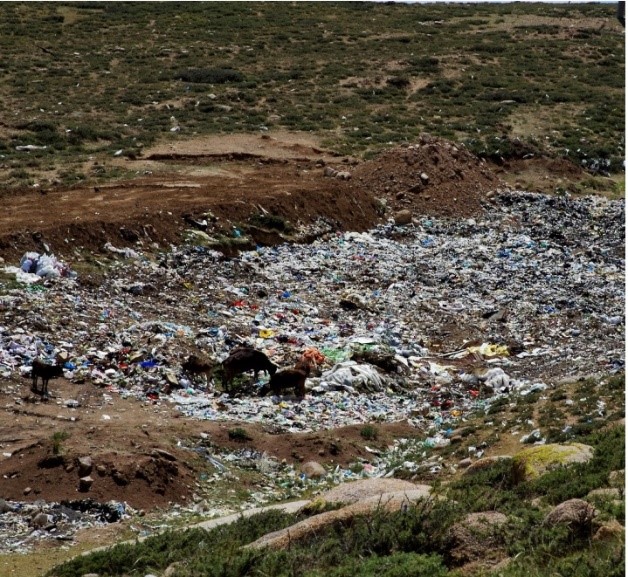Senior year at College of Agro-Biological Resource Sciences, School of Life and Environmental Sciences
Kotake Kaho
A beautiful city.
That was what I thought when I first got off to Bishkek, the capital of Kyrgyz. I vividly remember feeling that it was a nice city with well maintained streets free of litter, lush green parks here and there, and a view of the snow-covered mountains in the distance.


(Source:https://zoinet.org/wp-content/uploads/2018/02/CA-waste-eng.pdf)
While Kyrgyz has such beautiful cityscapes, it also has a serious garbage problem. There are no garbage disposal facilities in Kyrgyz. The garbage discharged is transported to the landfill without any classification. Landfills that have become a mountain of garbage continue to expand beyond their acceptable capacity. It is also still widely practiced to dump the waste not in landfills, but in other vacant lots, or to burn it at home for warmth.
In addition, in Bishkek, there is smog in the winter that makes the air cloudy and white. This is due to exhaust when using heating. In addition to individual heating, Kyrgyz has large-scale regional heat supply (district heating). It is a system that supplies heat from the facility to each building by sending it to the city through a pipeline. The exhaust from this heat generation process is one of the causes of air pollution. In addition, the current facilities and systems have significant energy loss, and most of the heat generation is lost before it is supplied to the city. Despite the large number of air pollutants emitted, less than 20 percent of households in Kyrgyz can use heating.
It was the night before I returned to Japan after the training that I learned that Kyrgyz had such environmental problems. I had heard from local students that the movement to reduce plastic was spreading, and this was just when I was feeling the high level of environmental awareness. I remember being shocked. In particular, as for garbage, animal bodies, medical waste, chemicals, etc. are dumped without classification, and it can threaten the health of the human body, livestock, and wild animals and plants like former Japan. As a country that has suffered and overcome serious pollution, shouldn’t we lend a helping hand so that they do not make the same mistake?
References
Energy Sector Management Assistance Program (ESMAP). 2018. website. https://www.esmap.org/node/153677
Natasha M. Sim, David C Wilson, Costas Velis, Stephen R. Smith(2013) Waste management and recycling in the former Soviet Union: The City of Bishkek, Kyrgyz Republic (Kyrgyzstan). Waste Management & Research, 31(10 suppl): pp.106-125
United Nations Environment Programme, 2017. CENTRAL ASIA Waste Management OUTLOOK. https://zoinet.org/wp-content/uploads/2018/02/CA-waste-eng.pdf



